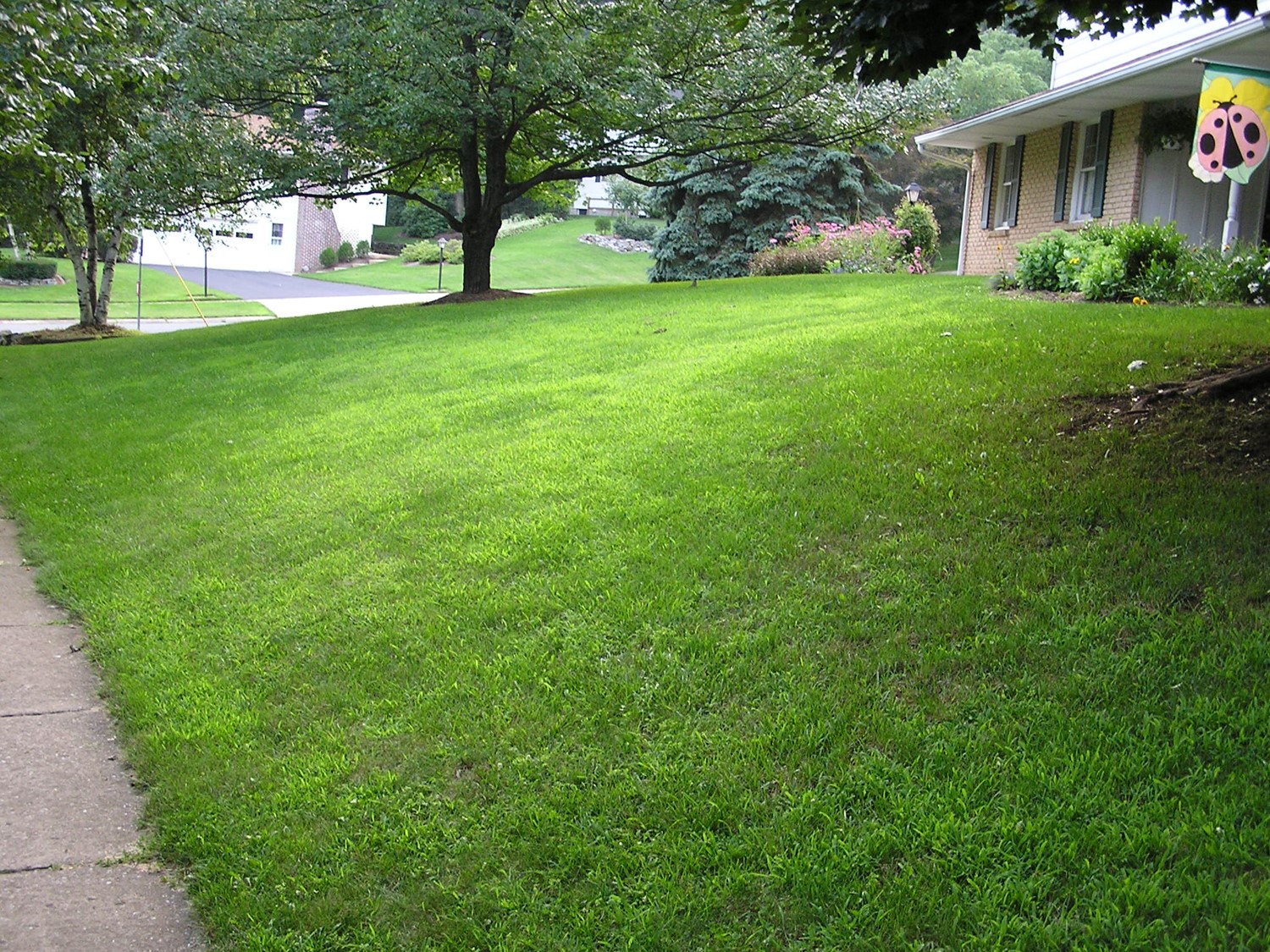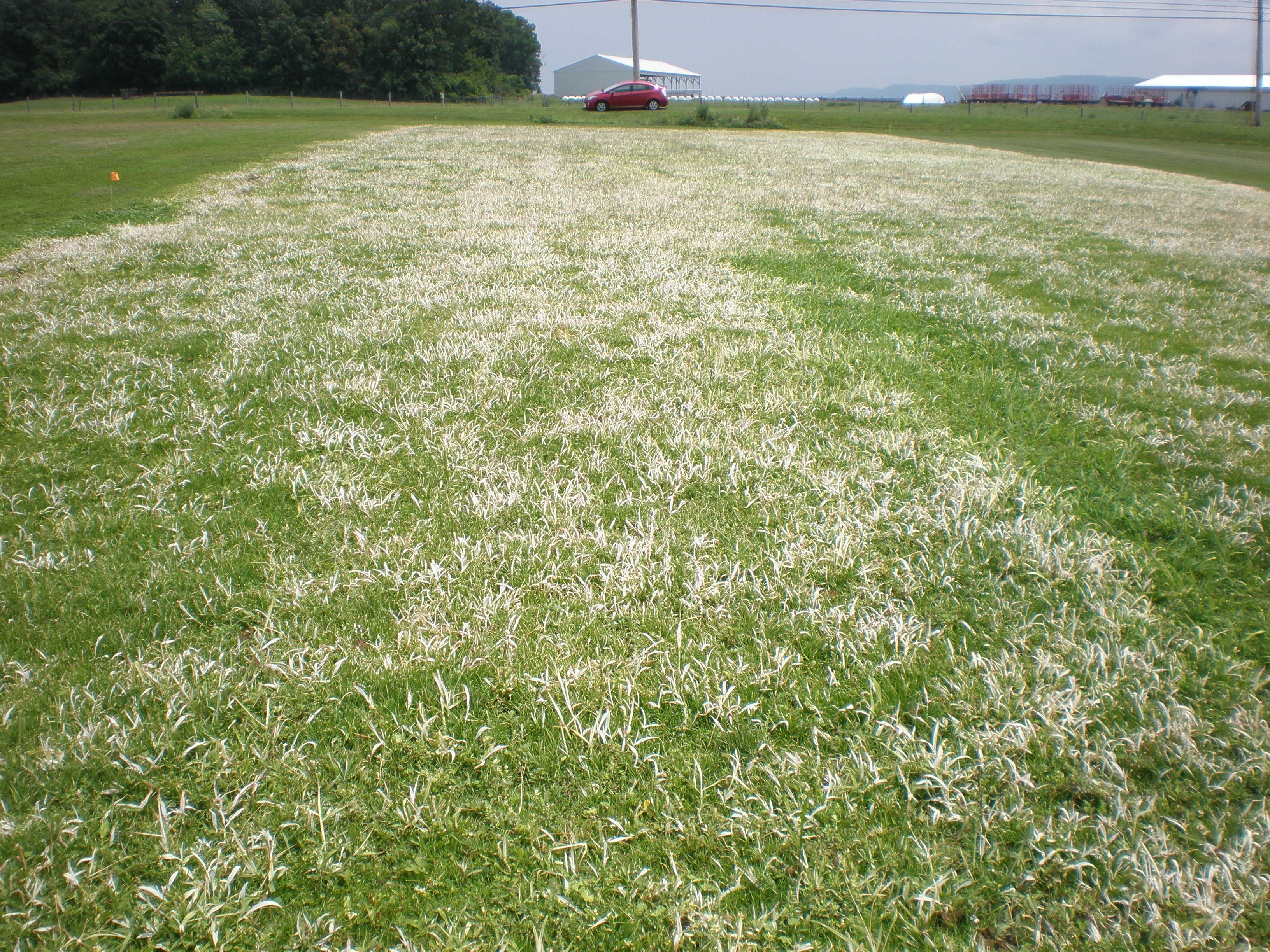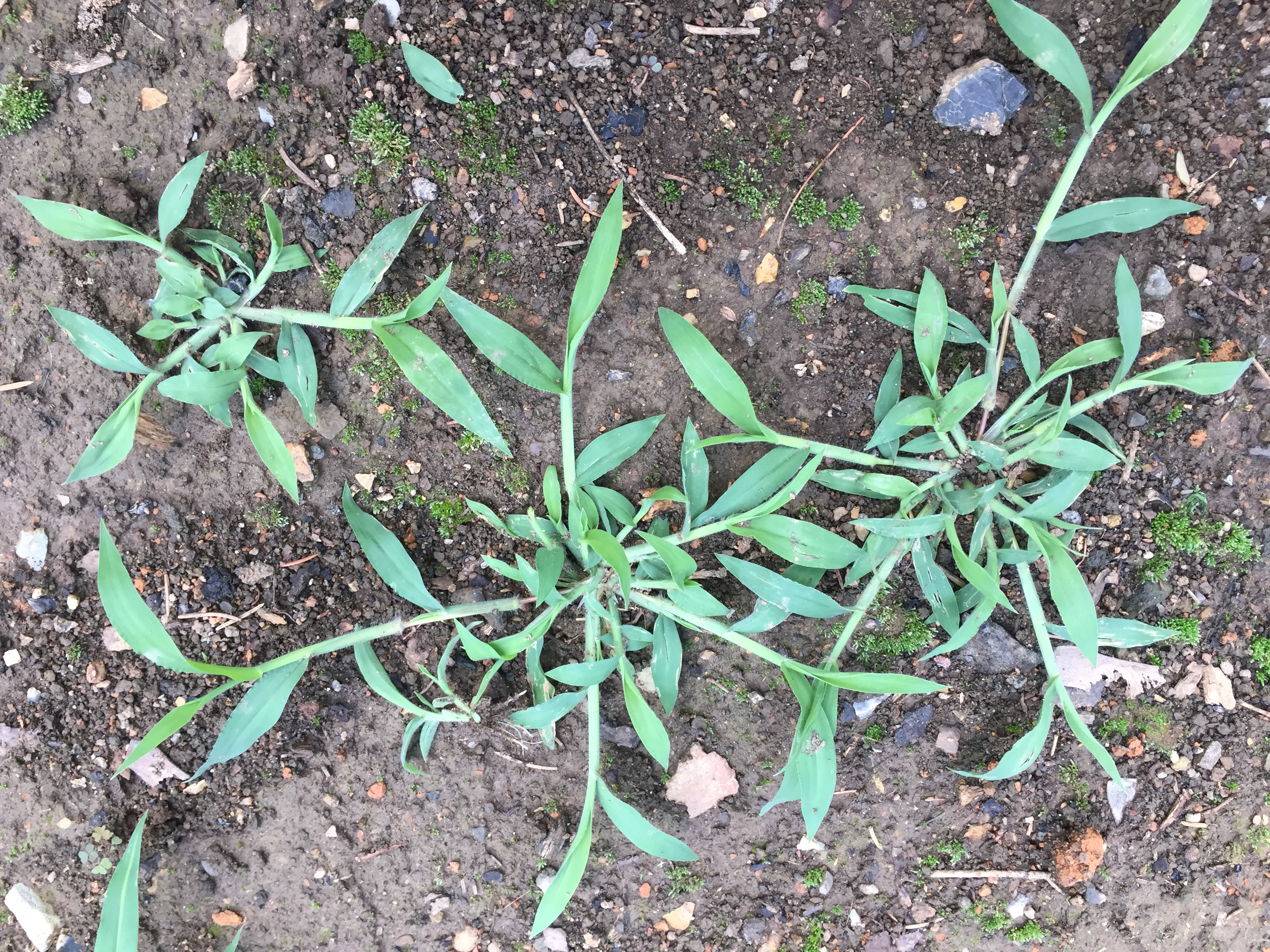Postemergence Control of Crabgrass and Other Annual Grasses in Turf
July 3, 2017 in Articles
 During summer, annual grasses can be unsightly weed problems in many cool-season turfgrass stands. The most common summer annual grasses in the mid-Atlantic region include crabgrasses (Digitaria spp.), goosegrass (Eleusine indica), foxtails (Setaria spp.), and barnyardgrass (Echinochloa crusgalli).
During summer, annual grasses can be unsightly weed problems in many cool-season turfgrass stands. The most common summer annual grasses in the mid-Atlantic region include crabgrasses (Digitaria spp.), goosegrass (Eleusine indica), foxtails (Setaria spp.), and barnyardgrass (Echinochloa crusgalli).
The seed germination period of summer annual grasses ranges from mid-spring to midsummer, and all plants are killed by frost in the fall. Flowering and subsequent seed set take place from midsummer to early frost and are the means of perpetuating the species. If not controlled, abundant quantities of seed are produced in late summer and fall, ensuring emergence of a new crop of annual grass weeds the following year.
The most effective means of controlling summer annual grasses is through cultural measures that create a dense turf (fertilization, proper mowing heights, pest control, etc.) and preemergence herbicides. When cultural and preeemergence control measures fail, postemergence herbicides can be used.
Postemergence control of crabgrass and other summer annual grass weeds involves the use of products that kill growing plants after they have appeared in the turf. Postemergence herbicides can be used to treat only those areas where summer annual grass weeds have emerged. Preemergence herbicides, on the other hand, are usually applied over the entire turf area since the applicator does not know where seeds are or if they are present.
For postemergence herbicides to be effective, grasses must be uniformly covered. Thus, these chemicals should be applied only when annual grasses are visible in the stand. The target species, stage of growth of the weed grass, and corresponding herbicide rate are extremely important for successful control, so applicators must pay close attention to product label directions. Environmental conditions also play an important role in postemergence control of annual grasses, with adequate soil moisture and moderate temperatures generally providing the best results.
Fenoxaprop‑p-ethyl (Acclaim Extra) is a postemergence herbicide that is slowly translocated within the plant and can control tillered annual grasses with a single application. It is labeled for control of crabgrass, goosegrass, barnyardgrass, foxtail species, Japanese stiltgrass, and panicum species. It is relatively safe on most cool‑season turfgrasses but may injure some Kentucky bluegrass cultivars, especially at high temperatures. The Acclaim Extra label warns against applications on putting greens, and recommends use on creeping bentgrass only when mowing heights are at or above 0.25 inches. Rates of Acclaim Extra range from 3.5 to 39 fl oz/acre, with suggested use rates increasing as the number of tillers on annual grasses increase up to 4 to 5 tillers. On Kentucky bluegrass the rate should be limited to 28 fl oz/acre per application, and 3.5 fl oz/acre per application on creeping bentgrass. This herbicide should not be applied if cool‑season turf show signs of drought stress. Fenoxaprop‑p-ethyl is less effective when tank‑mixed with phenoxy‑type herbicides such as 2,4‑D and MCPP, but it can be mixed with pendimethalin or other preemergence herbicides for improved control of crabgrass.
Mesotrione (Tenacity) is a systemic postemergence herbicide for control of crabgrass, goosegrass, barnyardgrass, and yellow foxtail. This herbicide can also control several species of broadleaf weeds, as well as creeping bentgrass, nimblewill, and nutsedge in turf. Applications are primarily for controlling newly emerged crabgrass in new seedings of Kentucky bluegrass, perennial ryegrass, and tall fescue. This herbicide should not be used in new stands of fine fescues. Best postemergence control of crabgrass and goosegrass is obtained when applied to plants with fewer than 4 tillers. Rates of Tenacity range from 5 to 8 fl oz/acre, and vary with turfgrass species. Repeat applications may be necessary for complete control of summer annual grasses; total seasonal applications should not exceed 16 fl oz/acre. Label instructions suggest spraying only after newly germinated turfgrasses have been mowed twice, or 4 weeks after emergence. Tenacity can be mixed with prodiamine, dicamba, triclopyr, fluroxypyr, or carfentrazone when used on established turf. Tenacity is most effective in controlling summer annual grasses when mixed with a nonionic surfactant. Susceptible weeds turn white before they die, creating a highly visible treatment effect for 2 to 3 weeks following application.

Crabgrass and nutsedge showing white leaf tissues following application of Tenacity herbicide.
Quinclorac (Drive XLR8, Quinclorac 75DF, others) is a postemergence herbicide for control of crabgrass, foxtail, barnyardgrass, and a number of broadleaf weed species in established turfgrass. It controls newly emerged summer annual grasses, as well as mature plants (annual grasses with more than 4 tillers). However, under certain conditions, this herbicide may not provide complete control of annual grasses with 2, 3, or 4 tillers. Quinclorac can also be used as a preemergence and postemergence herbicide in new turfgrass seedings. Be aware that the Drive XLR8 label suggests different application intervals following emergence of specific turfgrass species. For example, tall fescue seedlings can be treated 7 days after emergence, whereas Kentucky bluegrass should not be treated until 28 days after emergence. The label rate of Drive XLR8 is 64 fl oz/acre and should be combined with a methylated seed oil for best performance. Do not exceed 128 fl oz/acre over the course of one season. Be sure to observe label instructions when applying to established fine fescue lawns and creeping bentgrass (formulations containing quinclorac should not be used on bentgrass putting greens or collars). Drive XLR8 can be mixed with pendimethalin products for preemergence control of late-germinating annual grasses.

Crabgrass plants with multiple tillers.
Topramezone (Pylex) mode of action and systemic activity is similar to mesotrione (Tenacity), but possesses some important differences in weed species controlled or suppressed. Like Tenacity, Pylex is labeled for postemergence control of crabgrass, goosegrass, barnyardgrass, and foxtails in newly established or established turf. It can be applied any time before seeding, or 28 days after seeding tolerant turfgrass species. Pylex can control numerous broadleaf weed species, as well as nimblewill and dallisgrass in turf. This herbicide is also labeled for selective suppression/control of bermudagrass in cool-season turf. Unlike Tenacity, Pylex is not labeled for control of creeping bentgrass. Best postemergence control of summer annual grasses occurs when Pylex is applied to plants with fewer than 4 tillers. Rates of Pylex range from 1.0 to 1.5 fl oz/acre per application for most turf stands, but applications up to 2.0 fl oz/acre can be made on pure stands of Kentucky bluegrass. The total seasonal amount of Pylex is restricted to 4.0 fl oz/acre. Rates of <0.25 fl oz Pylex/acre per application are suggested for creeping bentgrass fairway turf (this product should not be applied to bentgrass greens and collars). Pylex can be mixed with pendimethalin when used on established turf. It is most effective in controlling summer annual grasses when mixed with a methylated seed oil or crop oil concentrate. Susceptible weeds turn white before they die, creating a highly visible treatment effect following application. The whitening effect can be reduced somewhat when triclopyr is mixed with Pylex. The addition of triclopyr also aids in suppression/control of bermudagrass.
by Pete Landschoot, Professor of Turfgrass Science, Penn State